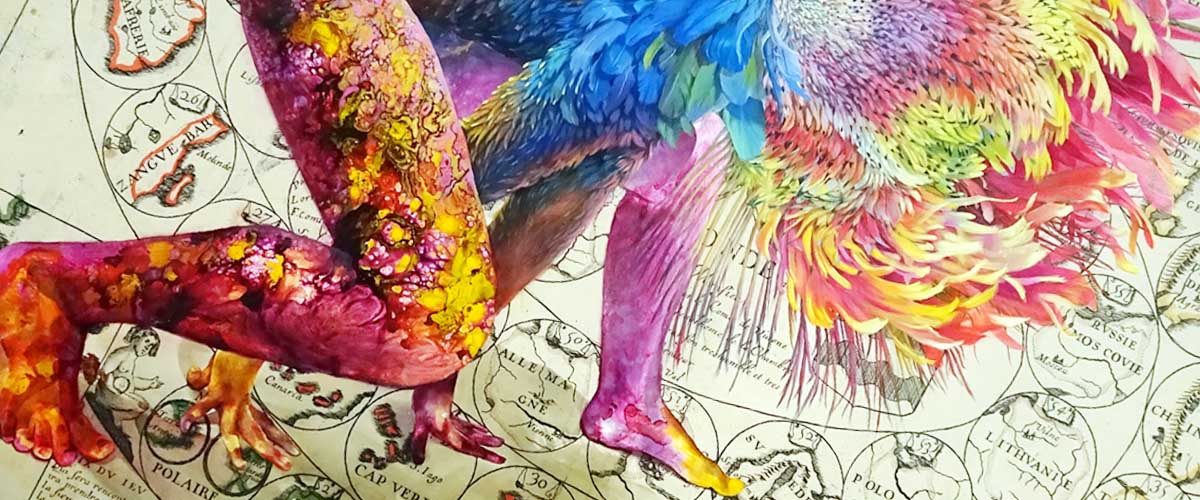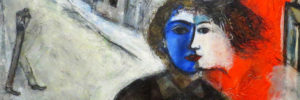Palimpsests, taste that word! It’s not often you gets to use a favourite, obscure word. These words are obscure for a reason, after all. Recently seeing the the exhibition of paintings by Dominican artist Firelei Báez at the Louisiana Gallery in Denmark gives me a chance, though, so I’ll take it.
Palimpsests
Palimpsests are twice-used documents. Originally these were parchment pages where the original text had been scraped away or bleached in order to make a new page for writing on. This happened in medieval monasteries, where scrivener monks were supplying themselves with surfaces to copy out religious texts. Parchment was valuable and durable and it was worth the effort to erase – or to try to erase – an older text to make a surface for new writing. Sometimes the original text remained as a ghost, almost legible beneath the new writing. Modern technology has made it possible to recover some of these.
Artists kept the creation of palimpsests alive. While clean, new writing paper became an everyday item, prepared canvasses continue to be relatively expensive. Using second-hand canvases for painting on, or repeatedly painting over the same canvas, has been common practice for centuries. Again, modern technology has made it possible to see the older images hidden below the layers of paint.
As a cash-strapped art student in New York, Firelei Báez came across piles of old books discarded from libraries. She was looking for a cheap source of sketching paper and was delighted. That was how it started. But she soon realised painting on some of these pages in particular, and letting the original print appear through and around her paint, gave a new resonance to her art.
Juxtaposition, commentary and dialogue
Her subject matter is the mythology and memory of her people, Dominicans, the descendants of slaves, native Caribbean islanders, and the offspring of Spanish colonists. Her palimpsests exploit principally the printed maps and diagrams of white, western explorers, imperialists, colonialists. The juxtaposition of her images with these printed lines creates a commentary or a dialogue. The colour of her oil or acrylic paint against the black and white of the printed images she overpaints is startling, dramatic.
In Báez’s art, the coloured voice, so often muted or ignored, is given the opportunity to respond to the matter-of-fact statements of white power holders. The matter-of-fact is perhaps not quite so factual a matter after all. The newly discovered lands were not new for the people who already lived there. The resources of empire flowing to the imperial centre were acquired through the labour of the enslaved.
Gallery
Click on any of the images to see them full screen in a slideshow.
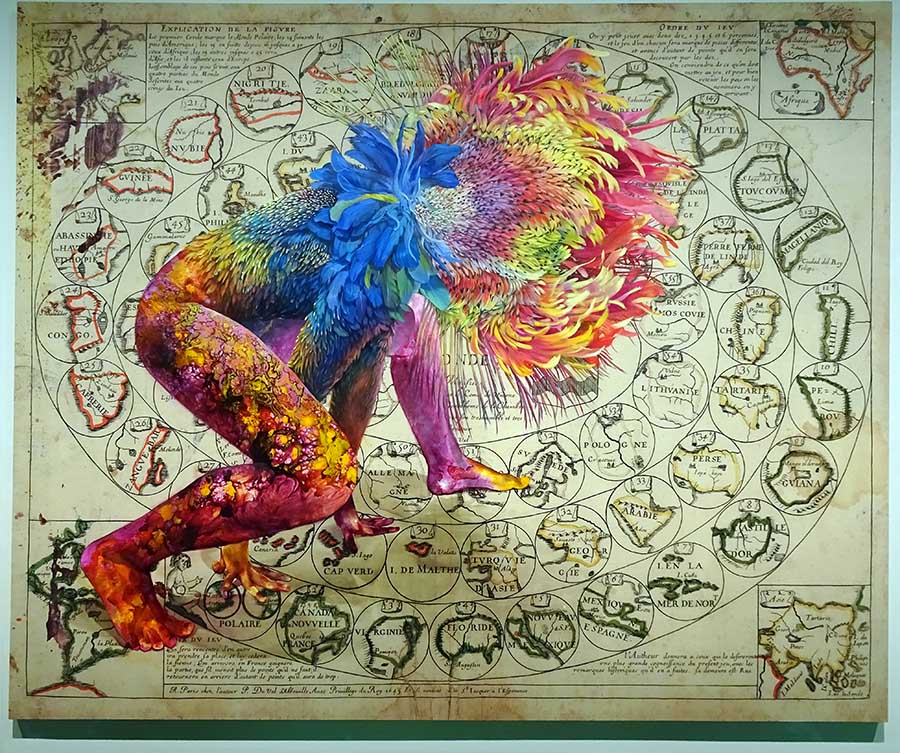
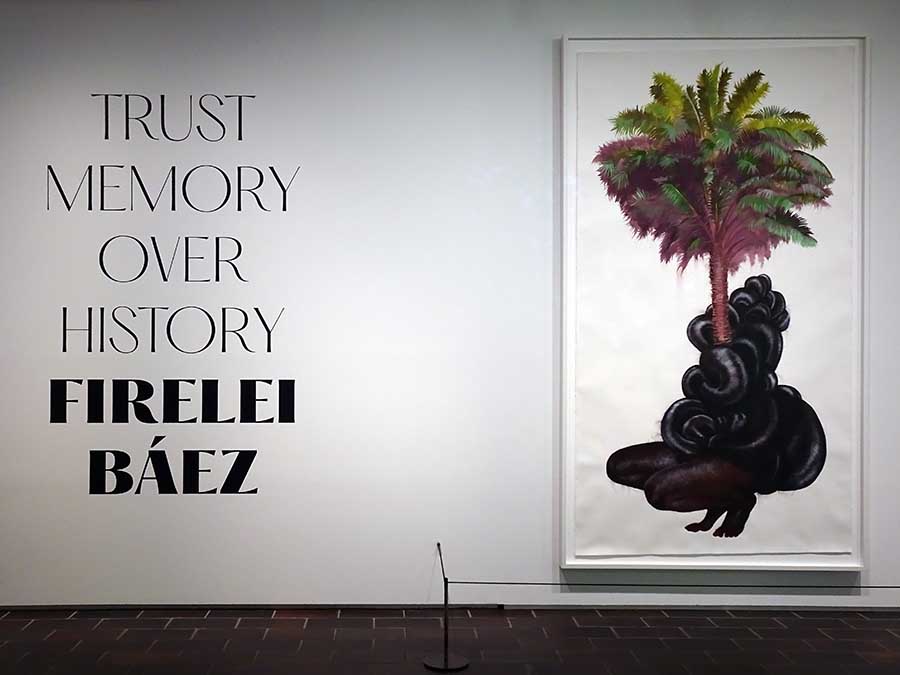
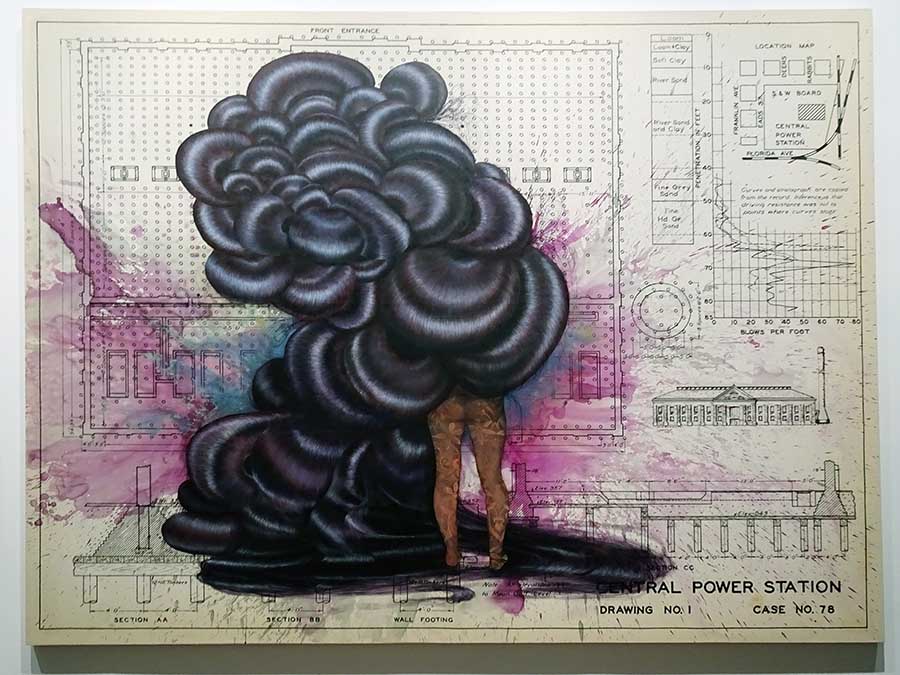
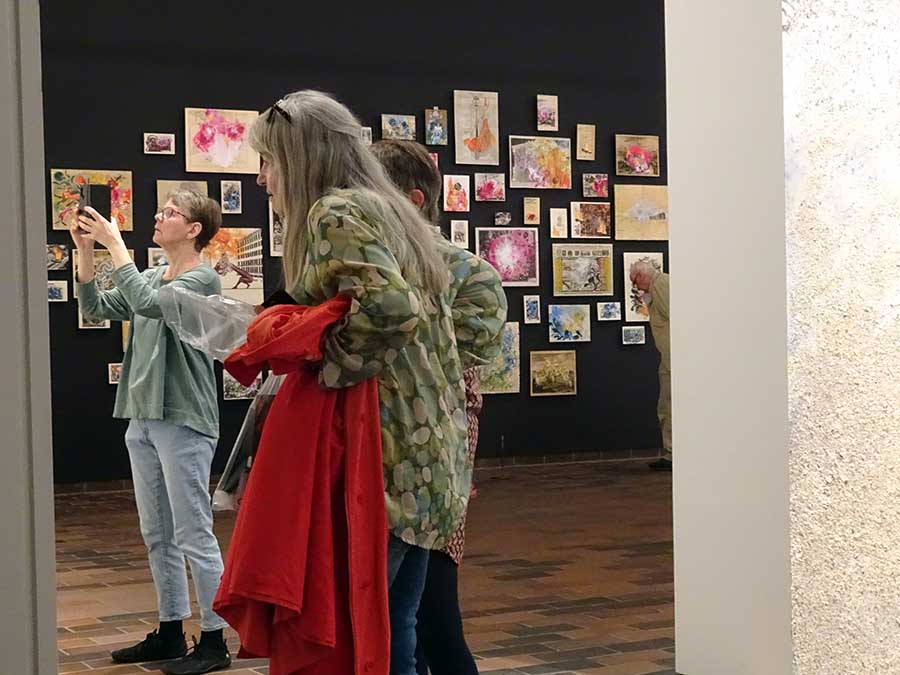
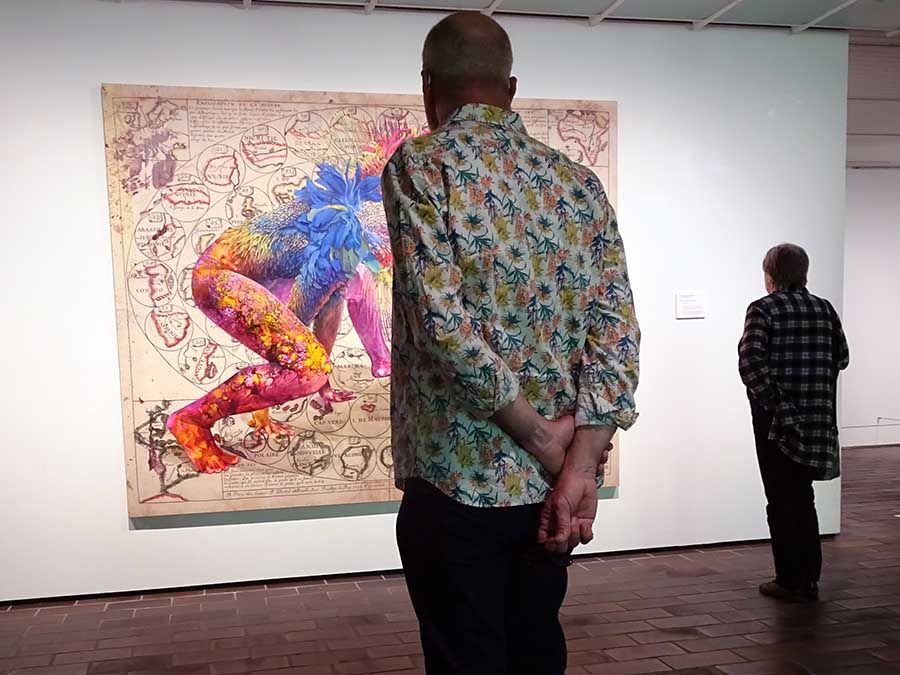
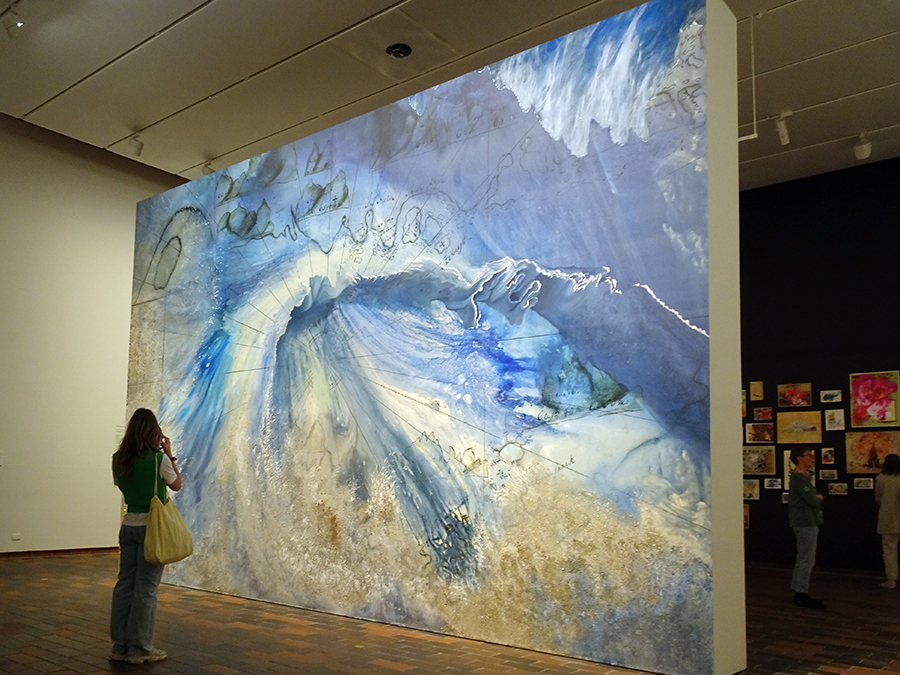
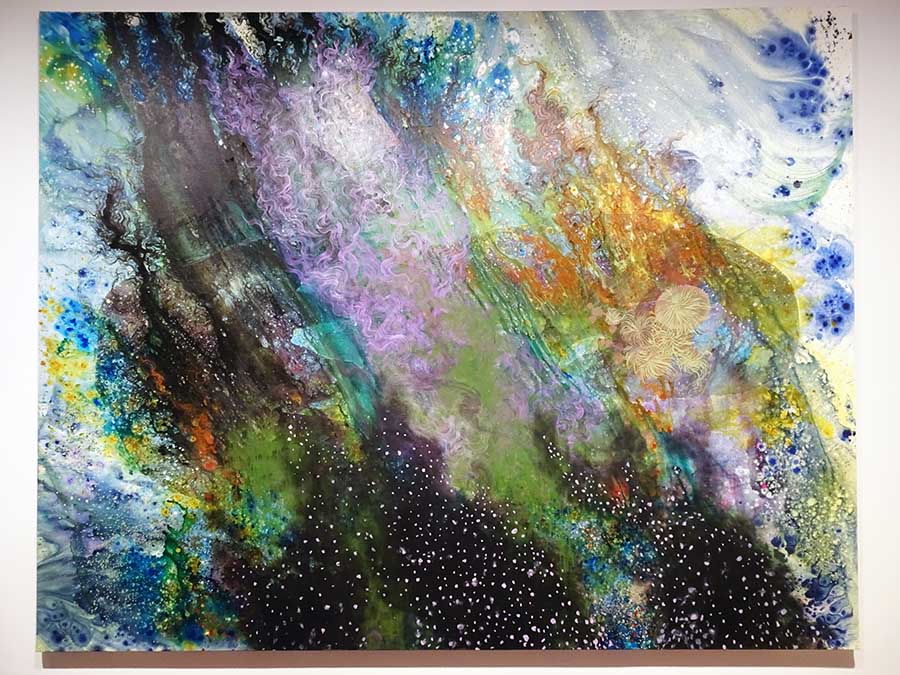
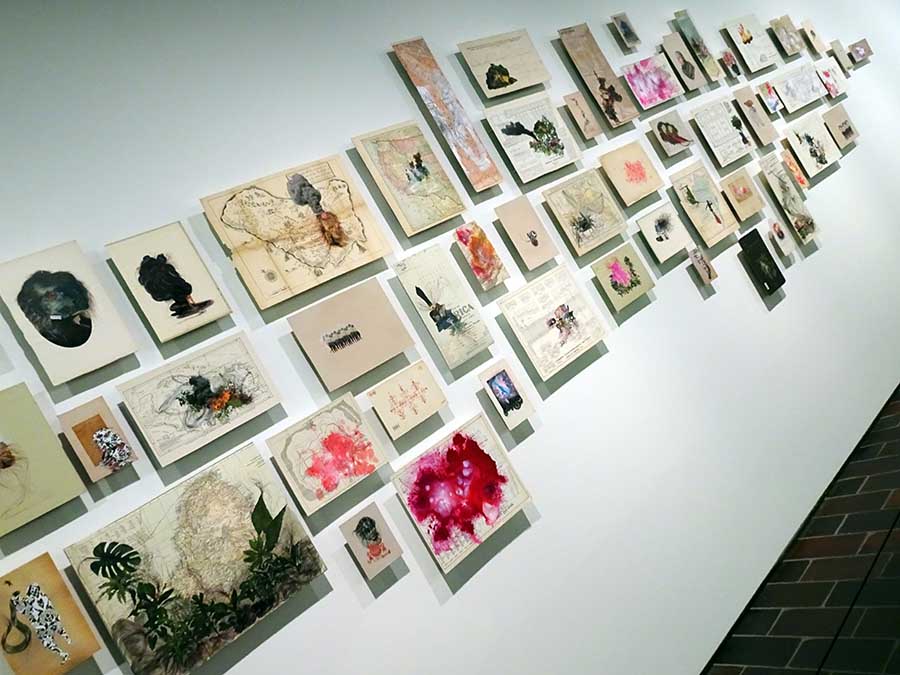
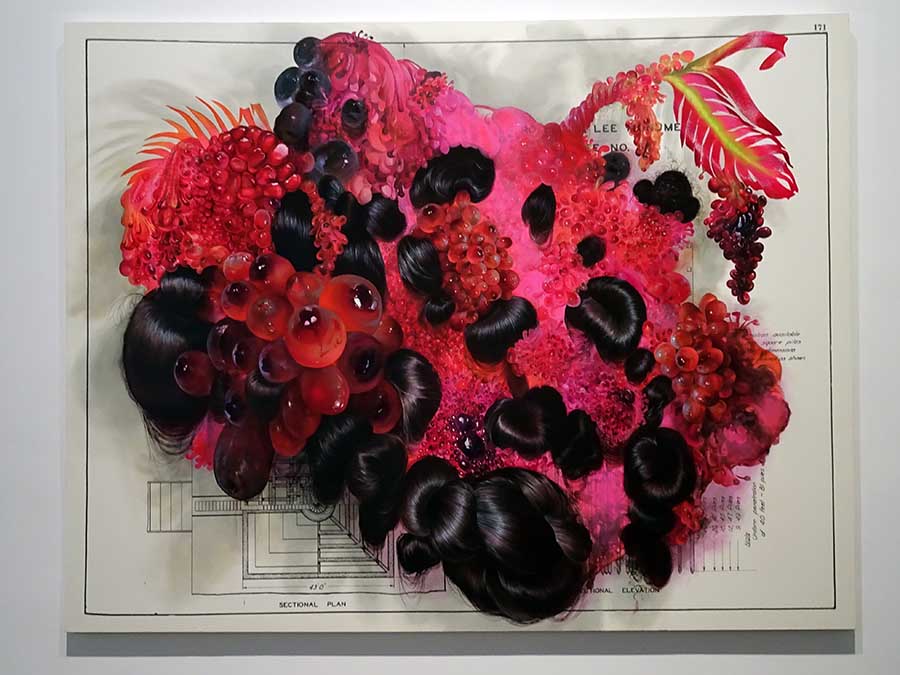
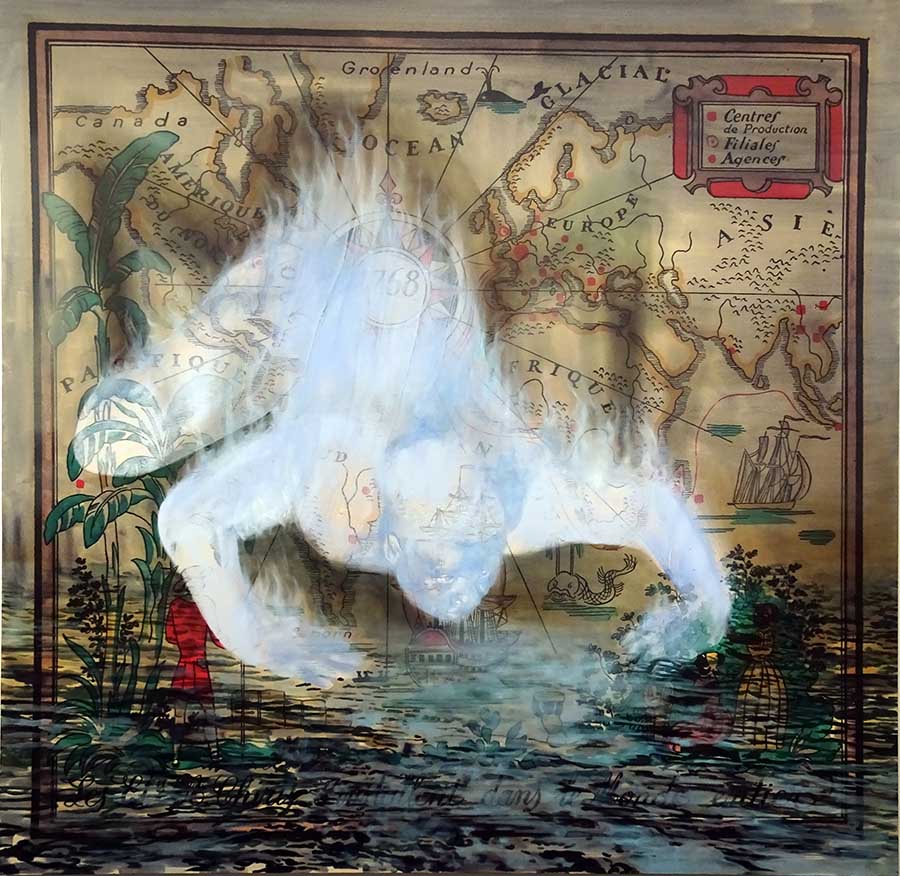
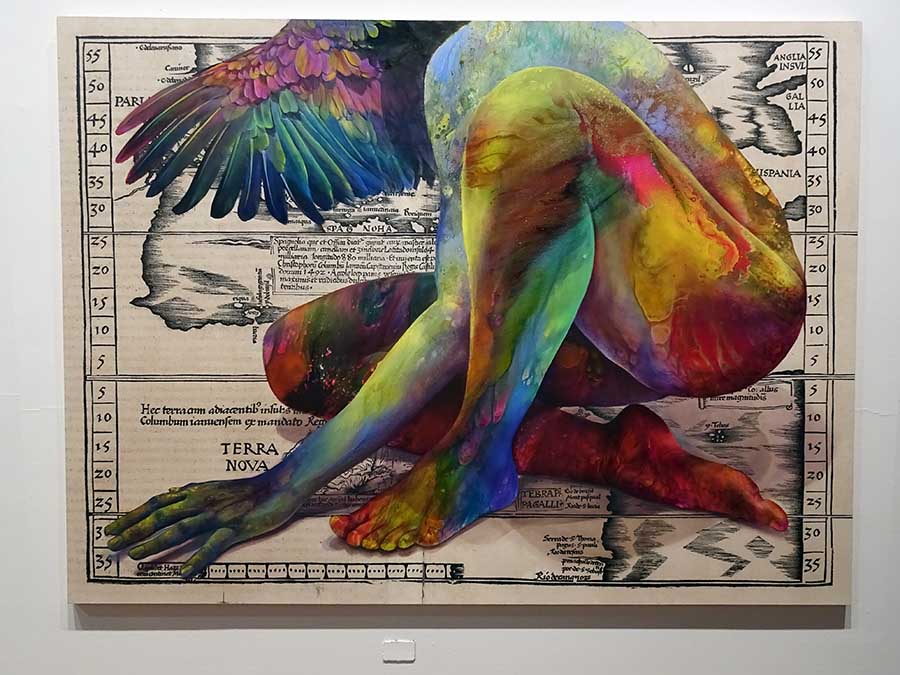
Mrs SC and I visited Louisiana Gallery in a fraught journey in the middle of May, just before the Firelei Báez exhibition closed. It was fraught for many reasons related to travelling, but nothing to do with Louisiana, so there doesn’t seem any reason to write more here about that side of the trip. Besides which, I’m still a bit traumatised and not able to see the funny side. Maybe later.

